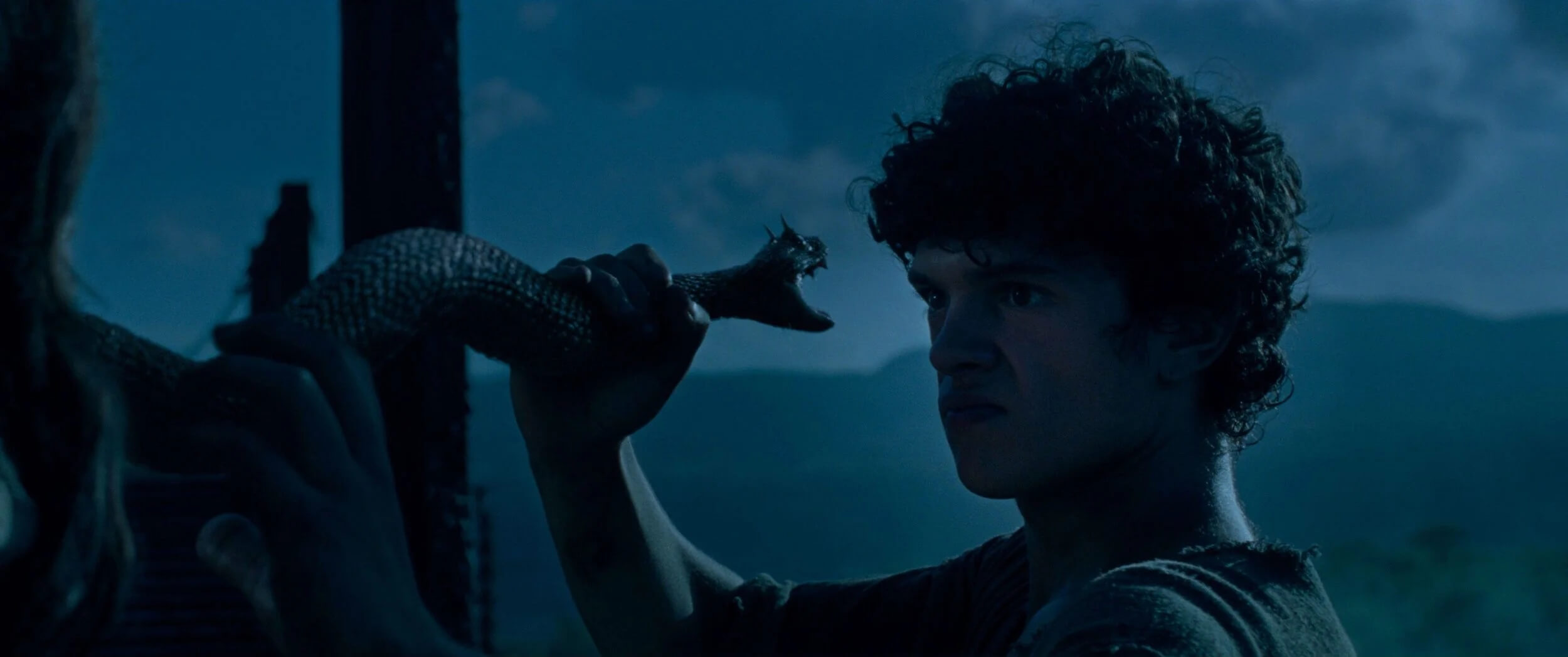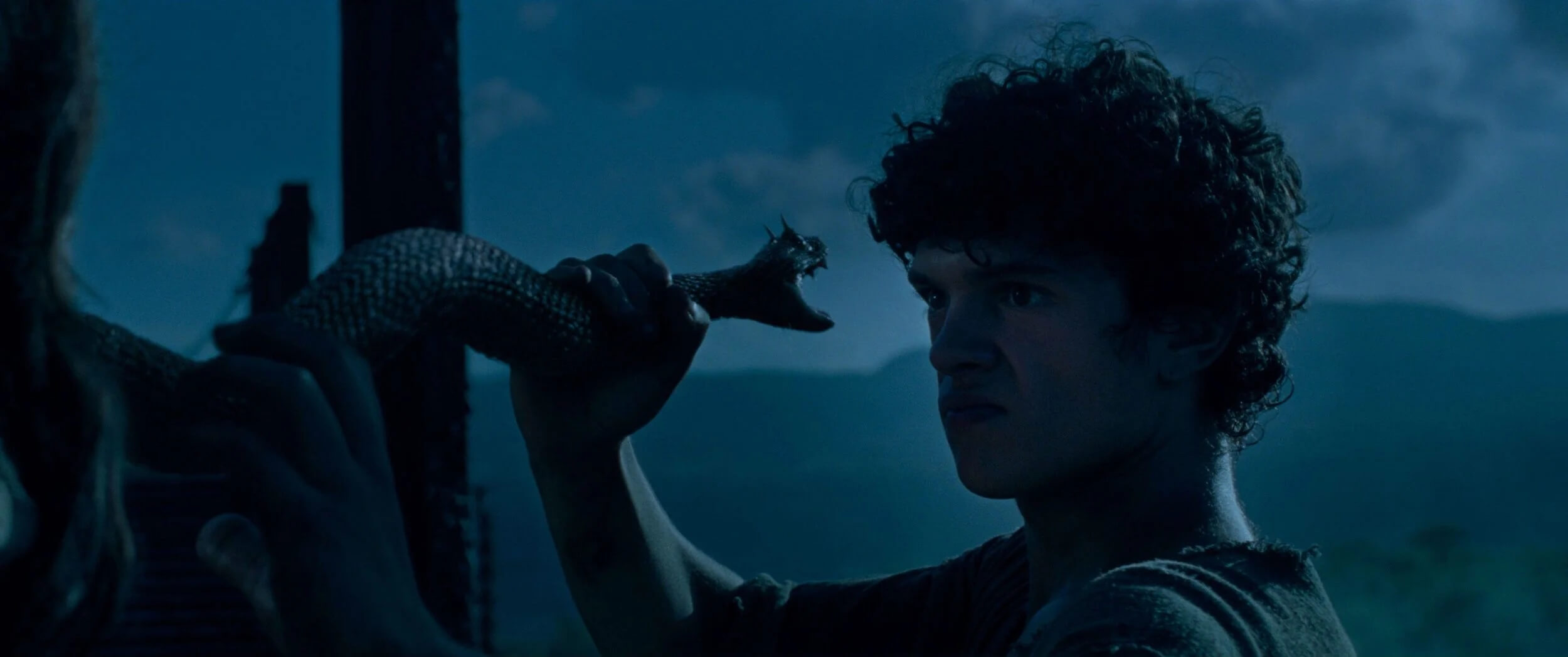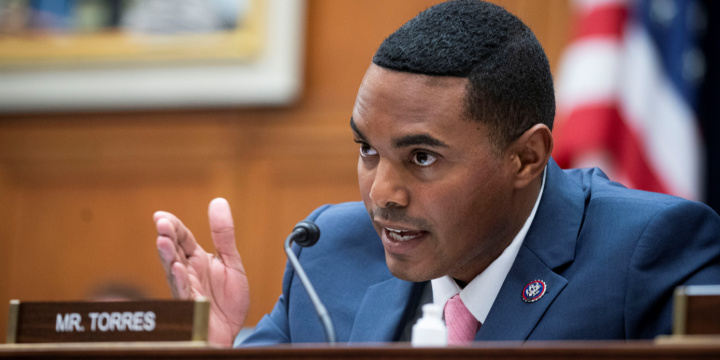Uncategorized
So, there was a swastika at my Airbnb

A few weekends ago I went upstate for a wedding, and briefly lived like a Victorian gentleman with a problematic taste in interior design.
Staying in a historic mansion (h/t Airbnb) in Newburgh, New York, I felt transported into a game of Clue, minus the murder. Was it me in the study with a sandwich? The parlor had a marble bust redolent of antiquity. From my top floor room there were panoramic views of the Hudson hills bursting with fall foliage. And then there was, at the corner of the landing … well, as I told my girlfriend, it’s more of a visual.

“Please do not be alarmed, but there are sauvastikas (more commonly known as swastikas) inlaid in the corners of the floors dating back to 1866, before Hitler was born,” the extensive house instructions said.
I wasn’t alarmed, more amused. (For context, the guests were almost entirely Asian with a couple of Ashkenazi Jews — and a miniature poodle.)
Of course I knew the Eastern origins of the motif. And I noted, as did our hosts, that these swastikas faced the opposite direction of the hooked cross favored by the Third Reich. The owners were right to say in their literature that the symbol “was stolen.”
Nazis really do ruin everything.
The architect, Frederick Withers, could only really be faulted for orientalism, which at the time wasn’t a dirty word. In any case, this was a landmark building registered with the historical society, and as such the swastikas couldn’t be altered. (“On a positive note,” our hosts added, “the original Tiffany stained glass window is well preserved up in the dining room.”)
At the wedding, I made the possible faux pas of mentioning the floors to friends of ours, one of whom grew up in India. It had just been Diwali, and he said kids draw swastikas everywhere during the festival.
“You’re taking it back,” I joked.
On the contrary, he said, they never really let it get taken away. Indians still use the swastika to signify peace and prosperity — its original meaning.
Maybe there’s a lesson there. Not really about ancient Indian symbols, but about what we feel comfortable letting Nazis get away with.
It’s long been a pet peeve of mine that so much of Jewish culture is boiled down to a period of about 12 years in a history that stretches back millennia. That public figures caught saying something antisemitic are immediately dispatched to the nearest Holocaust museum, rather than a Shabbat dinner or a museum of Jewish art.
When people online get defensive about their views on the Jews, they often mention how moved they were by Anne Frank’s diary, as if that was the answer key for understanding our peoplehood, and not just assigned reading. (In most schools in the U.S., the only time students hear anything about Jews is in a unit on the Holocaust.)
Members of the tribe are far from immune to this phenomenon. To be an educated, secular Jew, for many, is to have endured a screening of Schindler’s List — or, if you’re more ambitious, the more than 9 hours of Claude Lanzmann’s Shoah. You don’t see the Talmud in every Jewish home (granted, it takes up a lot of shelf space), but you can probably find a copy of William Shirer’s Rise and Fall of the Third Reich.
Jewish identity has been shaped by our persecution — and remembrance is an important Jewish imperative — but as I’m far from the first to point out, when we take history and memory culture to extremes, we end up ceding our own narrative to those who wanted to erase us.
As scholar Miriam Udel put it in her recent book, “The Holocaust is, in a profound sense, not a Jewish story.” This stopped me when I first read it, but the more I considered it, the more I saw her point. The way the Shoah is typically related, it’s not a story where Jews have a great deal of agency. Jews weren’t passive. Tales of resistance abound — and should be emphasized — but it’s still primarily a story in which something was done to the Jews, and for reasons the Jews had no real control over.
Indians don’t let Nazis have a monopoly on the swastika — why should Jews allow them to define Jewishness?
I am not advocating for the return of parquet-inlaid swastikas in Western homes, whatever their direction. I’m not even for a revival of the Hitler mustache that Michael Jordan once attempted to resuscitate in a Hanes undershirt commercial. But I do think there’s a wisdom in not permitting our enemies to distort our much older tradition.
In Yiddish, we say “mir veln zey iberlebn,” we will outlive them — them being Nazis, antisemites and the various Hamans that rise up in every generation. While today that seems aspirational, we must remember we were here first, and there’s far more to Jewish life than death.
The post So, there was a swastika at my Airbnb appeared first on The Forward.
Uncategorized
Settlers torched a West Bank mosque — and the milquetoast Israeli mainstream response won’t suffice
For more than two years, masked settler mobs in the West Bank have torched mosques, burned Qurans, uprooted olive trees, attacked olive harvesters, and rampaged through villages — all with almost no consequences.
Just this week, masked settlers torched a mosque in Deir Istiya, burned Qurans and scrawled hateful graffiti on its walls — only two days after dozens of settlers attacked a village near Nablus, injuring several Palestinians and burning a warehouse. “All state authorities must act decisively to eradicate this phenomenon,” said President Isaac Herzog, calling the strikes “shocking and serious.”
But Herzog would be naïve to expect Prime Minister Benjamin Netanyahu’s government to heed his call. And the West Bank is rapidly turning into an emergency of explosive proportions.
The sharp rise in attacks on Palestinians and their property began in late 2022, when Netanyahu’s calamitous coalition took over, and ramped up with the onset of the Israel-Hamas war. The United Nations counted more than 1,400 incidents between October 2023 and October 2024.
But while the war in Gaza has reached a ceasefire, the violence in the West Bank shows no sign of abating: Independent trackers reported a record 264 settler attacks in October 2025 alone.
Add to that the Israeli military’s own violent record in the West Bank, and the picture is grim. In 2025 alone, the U.N. has documented at least 178 Palestinian deaths linked to settler and military violence.
If you look for the state’s corrective force you will find a yawning gap. In the most chilling scenes — in Huwara in February 2023, and in coordinated attacks on several villages this month — groups of masked young men have attacked Palestinian civilians, while soldiers and police have either arrived late or failed to stop the violence. Israel’s own watchdogs and human-rights organizations document a pattern of non-prosecution that even predates the current government. Yesh Din, which systematically tracks police investigations into Israeli civilians’ violence against Palestinians, shows that roughly 94% of files from 2005–2024 were closed without indictment, and that only about 3–6% of investigation files lead to conviction.
Which raises the obvious question: When attacks are so frequent and prosecutions so rare, who benefits?
Since late 2022, the survival of Netanyahu’s governing coalition has depended on hard-right parties whose leaders and bases overlap with the radical settler movement. Two ministers who matter — Bezalel Smotrich and Itamar Ben-Gvir — are both unapologetic advocates for settlement expansion and the vision of Jewish sovereignty over the West Bank, which they refer to by the biblical name of Judea and Samaria. Ministries and offices that oversee law enforcement in the West Bank — including the Civil Administration and Ministry of National Security — are effectively controlled by figures sympathetic to settlement expansion and skeptical of aggressive policing of their own supporters.
This political reality filters down into operational choices. When enforcement agencies are staffed and supervised by officials who owe their political fortunes to the settlement movement, enforcement will not be robust. Arrests — where they occur — rarely lead to charges that stick. In the first half of 2025, for example, there were hundreds of complaints, but only a fraction were opened as criminal files, leading to scant dozens of arrests.
Why would a democratic government tolerate this?
The answer isn’t just about coalition management. It’s about the government’s fundamental ideological sympathy with settlers, and the absence of a credible alternative plan for the land and people under Israeli control.
For decades, the West Bank settlement project could be dismissed as reversible, or up for bargaining in a final-status negotiation. But every new outpost has served to make a contiguous Palestinian state less viable, bringing Israel closer to incorporating millions of Palestinians — without giving them full citizenship or political rights.
The mainstream right lacks a plan for this demographic reality. But the far right has one: apocalyptic warfare and the eventual removal of Palestinians from the land, an outcome that extremists see as inevitable. That is why people like Smotrich and Ben-Gvir appear indifferent to the destabilizing violence, if not actively encouraging of it: instability is a feature, not a bug, for those prepared to use it to remake reality.
Now, the mainstream right has put itself in a position in which it cannot govern without the far right — so it has ceded moral and policy ground to radicals. The true spirit of Zionism — which is humanistic and humane — is suffering.
Which brings us back to Herzog. President Donald Trump, during his Knesset speech last month, urged him to pardon Netanyahu of all charges that he is currently facing in court. This week he did it again, in a letter claiming that Netanyahu is facing “a political, unjustified prosecution.” Herzog’s office said he held Trump “in the highest regard,” but that anyone seeking a pardon had to submit a formal request — something Trump lacks the ability to do.
I have a better idea. Pardon Netanyahu on the explicit condition that he leave politics altogether, forever. And have a new coalition, free of his corrupting influence and the morally destructive politics of the far-right, set to work to clean up his mess.
The post Settlers torched a West Bank mosque — and the milquetoast Israeli mainstream response won’t suffice appeared first on The Forward.
Uncategorized
This Jesus horror movie could have used more heresy

Historically, Christianity has carefully controlled its interpretations and texts; texts that portrayed Jesus in anything other than a glowing light or complicated the narrative the early Church hoped to spread — anything that made him look too human or too flawed — got taken out of the canon and declared heretical.
Which means most people are not familiar with the Infancy Gospel of Thomas, an apocryphal and perhaps Gnostic text about Jesus’ early years, from toddlerhood to his tweens. In it, Jesus is depicted as a wise but petulant child who, like any kid, has occasional temper tantrums. But, as the son of God, his are a bit more impactful; he curses and smites everyone who annoys him. (He does resurrect some of them once he’s calmed down.) He also uses his powers for deeply mundane and childish tasks, like animating his toys or making his work easier. It is, in short, not a particularly virtuous or divine depiction.
This is why The Carpenter’s Son, a new movie written and directed by Lotfy Nathan that takes its inspiration from the apocryphal gospel, has upset Christians. It’s also because the film is a horror flick full of roaring demons and horned snakes pulled from the throats of the possessed.

Pop artist FKA Twigs stars as Mary, and Nicolas Cage as Joseph — the movie doesn’t name any of its characters, so technically they’re playing The Mother and The Carpenter, respectively, but we all know who they really are — who are struggling to parent their powerful child (a constantly glowering Noah Jupe). After a bloody, screaming birth, they flee Herod’s soldiers’ attempts to throw their infant into a giant bonfire; years later, when they finally settle down, Jesus has some weird run-ins with the villagers, including a beautiful but demonically possessed young woman named Lilith and a leering, scar-covered child who lives among lepers and is as evil as she seems to be. Snarling demons ensue.
Before the movie came out, many Christians passed around petitions and wrote blogs about the film’s blasphemy. But The Carpenter’s Son is not, in fact, subversive at all. First of all, Jesus is not a petulant toddler; he looks to be around 20. All the notable anecdotes from the apocrypha are missing: He hardly smites anyone, doesn’t animate his toys and never even blinds the neighbors. In fact, he repeatedly rejects temptation, death and evil. There’s even a cheesy CGI halo, the appearance of which made the audience snicker the night I saw the film.

Despite the various demons, this makes for a plodding, moralistic movie that adds little to the basic Christian story other than a few jump scares. (It is not aided by the acting, which amounts to Jesus scowling, Mary looking stricken and Joseph yelling in the blustering way only Cage can.)
But there are hints of something more interesting, if only Lotfy Nathan, who both wrote and directed the film, had been bold enough to embrace the text that inspired him. The scarred child tells Jesus that Joseph, who is constantly exhorting his son to pray harder and more often, is an “oppressor,” and questions whether the difference between good and evil is so clearcut; despite being demonic, she is also the one who encourages Jesus to help the possessed. She and Joseph worry that the world is too unclean to truly be a creation of God, and wonder if Jesus is truly “righteous.” Moments like these nod to Christian gnosticism, which posited that the earth was created by a false God and is evil.

These kinds of questions are heretical in mainstream Christianity. But Judaism preserved many similarly extratextual ideas in the form of the Midrash, a set of interpretations that I often describe as “rabbinical fan fiction” because of their tendency to write in entire characters and plotlines that didn’t exist in the original biblical text. For example, in one midrash about the Binding of Isaac, in which God orders Abraham to sacrifice his son but stays his hand at the last moment, Abraham actually succeeded but Isaac’s soul returned and he was resurrected; in another, Satan appears on the pair’s journey to the sacrifice to tempt Abraham to disobey.
For Jews, these stories — however outré they may be — are not heretical. It’s kosher to discuss and consider the questions they raise about the nature of the patriarchs and other lauded figures, making for a rich discourse over the centuries. This openmindedness and cultivation of unorthodox stories has also, not incidentally, made for better entries into the horror genre; the past decade has seen Jewish horror movies drawing from myths of golems, dybbuks, the practice of guarding the dead before burial and even the horror of an overbearing Jewish mother. The open canon provides a rich text from which to mine.
Had Nathan felt free to do the same with the apocrypha, perhaps The Carpenter’s Son could have been an interesting and affecting movie full of mysterious questions about the nature of evil and God. After all, the idea that God could be a demon, or even that God might be too capricious and chaotic to be trustworthy, is far scarier than demons being demonic.
The post This Jesus horror movie could have used more heresy appeared first on The Forward.
Uncategorized
Ritchie Torres Faces New Socialist Opponent in Democratic Primary Race Amid DSA Victory Lap Over Mamdani Win

US Rep. Ritchie Torres (D-NY) speaks during the House Financial Services Committee hearing in Washington, DC, Sept. 30, 2021. Photo: Al Drago/Pool via REUTERS
Public defender and Democratic Socialists of America (DSA) organizer Dalourny Nemorin has launched a primary challenge against US Rep. Ritchie Torres in New York’s 15th Congressional District, setting up a competitive intra-party contest in one of the nation’s poorest districts.
Nemorin announced her campaign on Wednesday at the Andrew Freedman Home in the Bronx, where she emphasized housing affordability, public housing conditions, immigrant services, and economic hardship as central issues facing the district. She said many residents feel underserved and argued that the district requires “a new type of leadership.” The area has a median household income of about $44,000, with more than 30 percent of residents living below the poverty line.
Torres, first elected in 2020, is a high-profile Democrat known for his work on housing oversight and for being the first openly LGBTQ Afro-Latino member of Congress. He currently serves on the House Committee on Financial Services and has been a vocal supporter of Israel, a position that has drawn national attention and, in some cases, criticism from the Democratic Party’s left wing.
Nemorin, a member of the far-left DSA, is directly targeting Torres on campaign financing and foreign-policy stances, criticizing his acceptance of contributions from real-estate developers and from the American Israel Public Affairs Committee (AIPAC). She argued these ties reflect a misalignment between the congressman’s priorities and the needs of the district. Torres’s campaign has previously defended its donor base as consistent with his longstanding policy positions and record.
“I think the country is talking about a new type of representation, a new type of Democrat, a new type of leadership, which is what Zohran’s race represents,” she said, referring to Zohran Mamdani, who was elected mayor of New York City last week.
Mamdani, a democratic socialist and anti-Israel activist, is also a member of the DSA, which appears to see his victory as a sign of momentum. The organization has reportedly created a list of far-left demands for Mamdani when he assumes office. Most of the demands concern boycotts targeting Israeli-linked entities.
Nemorin’s challenge highlights ongoing divisions between establishment Democrats and progressive organizers in New York City. Her campaign launch drew a largely young audience, signaling an effort to mobilize voters who have historically had low turnout in the district. Her campaign has said it will focus on door-to-door organizing and outreach in public-housing complexes.
Since entering Congress, Torres has positioned himself as an outspoken ally of Israel. As the Democratic Party has continued to grow increasingly critical of Israel over the past two years, amid the Gaza war, Torres has staunchly defended the Jewish state’s right to defend itself from existential threats such as the Hamas and Hezbollah terrorist groups. He has also spoken against rising antisemitism in New York City, even calling on local universities to adopt more vigorous policies protecting Jewish students. However, his strident support for Israel has sparked ire among the left flank of his own party.
Torres enters his reelection bid with significant advantages, including incumbency, name recognition, fundraising capacity, and a political network built over multiple election cycles. Primary defeats of sitting members of Congress remain rare, but progressive groups have succeeded in previous New York races when able to drive high turnout among younger voters and renters. Torres is expected to receive huge levels of support from the Jewish community within his district.
Moreover, Torres represents the poorest district for young people in the country, which is majority black and Latino, demographics with which far-left candidates have historically struggled. Observers have also pointed out that former New York Gov. Andrew Cuomo won Torres’s district during this year’s Democratic mayoral primary in New York City over the more progressive Mamdani, suggesting that the district possesses a deep reservoir of moderate voters.
The Democratic primary is scheduled for June 2026. Both campaigns are expected to center their messaging on housing, affordability, and constituent services. However, Torres’s opponents, including former New York assemblyman Michael Blake, have taken repeated swipes against his record on Israel, indicating that they will attempt to center the war in Gaza as a main point of attack during the primary. In his launch video, Blake attacked Torres for supposedly supporting a “genocide” in Gaza.
“I am ready to fight for you and lower your cost of living while Ritchie fights for a genocide,” Blake said in an announcement video.


